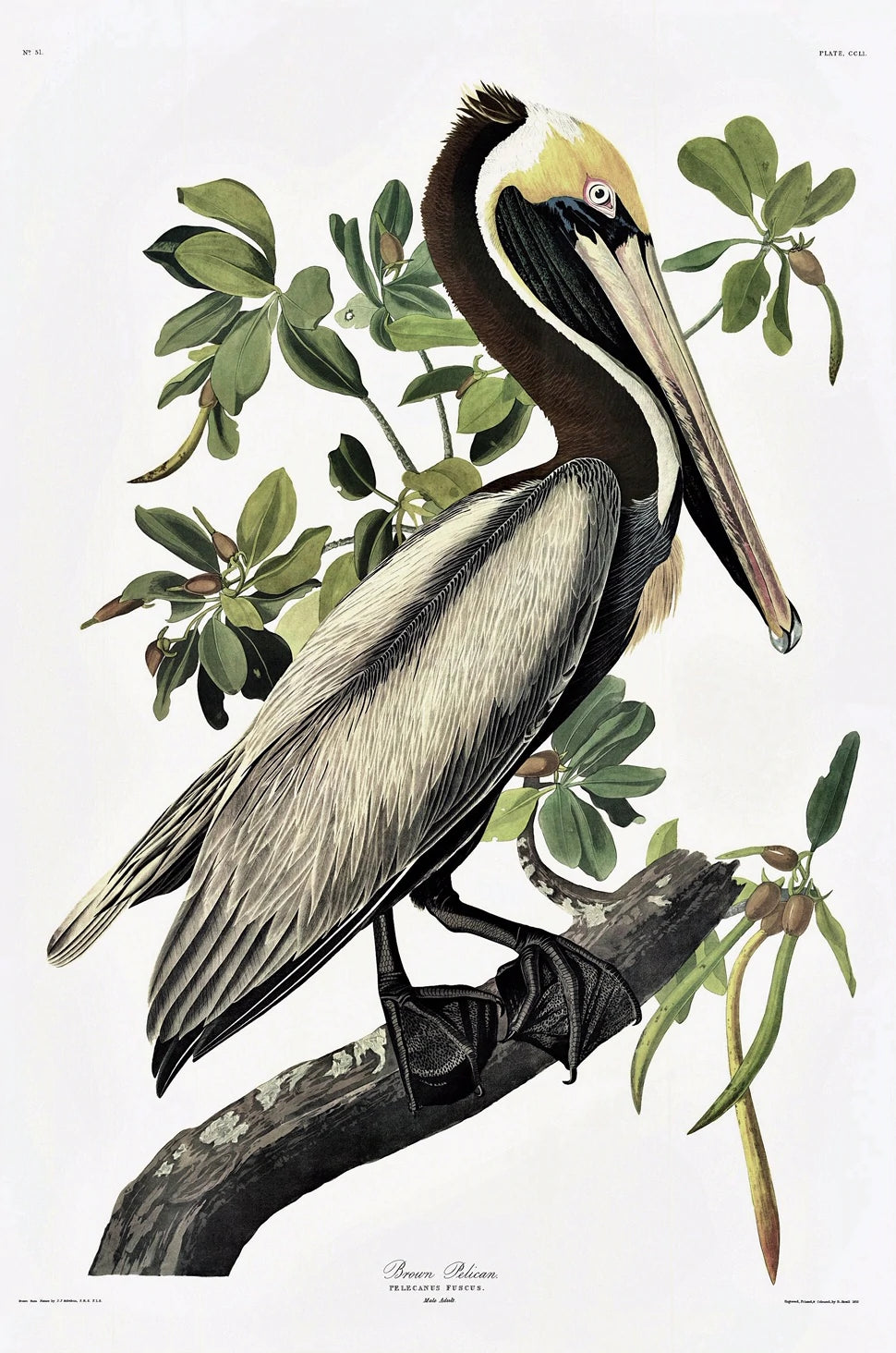Brown Pelican
The Brown Pelican
Princeton Audubon Double Elephant Edition •Double elephant (life size - 26 1/4 x 39 1/4) •Limited edition of 1500. •Pencil-numbered and embossed with the Princeton Audubon Limited seal. •Up to 11 color plates used. •Specially developed fade-proof inks. Absolute color fidelity to the actual original. •Printed on a 300 line. •Very heavy archival paper which is recommended by the Library of Congress for archives and is specially toned to match the actual color of the antique originals. •Registered to purchaser. •As permanently displayed at The Royal Society of London, to which Audubon belonged as a Fellow.
About the image itself ...
Audubon probably drew this adult pelican in the Florida Keys in April or May 1832. Landscape artist, George Lehman, painted the mangrove limb.
The brown pelican is a ponderous bird, but with its six-and-one-half-food wingspread has a powerful flight which it alternates with short glides. The bird carries a large pouch under its lower bill and has an appetite for fish as large as the pouch. American children learn of the brown pelican through a well known bit of doggerel that begins: "What a wonderful bird is the pelican-Its beak can hold more than its belly can,..."
A long line of these birds flapping and sailing, often in unison, is a familiar coastal sight. When fishing, the birds fly aloft, spot the schools of fish, then head downwind, pull back their wings, and plunge beak-first with a grand splash.
Audubon wrote: "The brown pelicans are as well aware of the time of each return of the tide, as the most watchful pilots. Though but a short time before they have been sound asleep, yet without bell or other warning, they suddenly open their eyelids, and all leave their roosts, the instant when the waters...resume their motion."
The Brown Pelican
Princeton Audubon Double Elephant Edition •Double elephant (life size - 26 1/4 x 39 1/4) •Limited edition of 1500. •Pencil-numbered and embossed with the Princeton Audubon Limited seal. •Up to 11 color plates used. •Specially developed fade-proof inks. Absolute color fidelity to the actual original. •Printed on a 300 line. •Very heavy archival paper which is recommended by the Library of Congress for archives and is specially toned to match the actual color of the antique originals. •Registered to purchaser. •As permanently displayed at The Royal Society of London, to which Audubon belonged as a Fellow.
About the image itself ...
Audubon probably drew this adult pelican in the Florida Keys in April or May 1832. Landscape artist, George Lehman, painted the mangrove limb.
The brown pelican is a ponderous bird, but with its six-and-one-half-food wingspread has a powerful flight which it alternates with short glides. The bird carries a large pouch under its lower bill and has an appetite for fish as large as the pouch. American children learn of the brown pelican through a well known bit of doggerel that begins: "What a wonderful bird is the pelican-Its beak can hold more than its belly can,..."
A long line of these birds flapping and sailing, often in unison, is a familiar coastal sight. When fishing, the birds fly aloft, spot the schools of fish, then head downwind, pull back their wings, and plunge beak-first with a grand splash.
Audubon wrote: "The brown pelicans are as well aware of the time of each return of the tide, as the most watchful pilots. Though but a short time before they have been sound asleep, yet without bell or other warning, they suddenly open their eyelids, and all leave their roosts, the instant when the waters...resume their motion."
